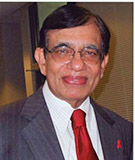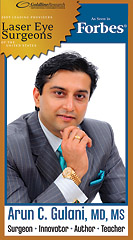
Promoting the health of Children - Part III

Yoga Can Help
As we have already discussed, it’s important to instill good habits in kids early on in their childhood. Social scientists have shown that those who reach their full potential overcoming life’s adversities generally tend to have good discipline with considerable resilience.
In this context, yoga for kids is of paramount importance. Regular practice of hatha yoga along with pranayama and meditation can go a long way in developing the child’s ability to focus on the present moment and become better in studies as well as other activities. The attention span of children is limited and it’s often difficult for many to finish a given project without prompting and encouragement. Yoga is one discipline that is not just for adults, it can be of immense help for children too. In addition to proper diet and regular aerobic exercises, it adds an extra dimension to their life, which is beneficial for both body and mind. “Yoga is a fun, easy way to calm children and takes the anxiety out of the hectic school year,” says the award-winning musician and kids’ yoga teacher Kira Willey of Fireflies Yoga Studio in Pennsylvania. You can make it a fun-filled hour for them by playing kids’ favorite music in the background.
Ronica Jaipershad of Tampa, an editor and writer (freelance graphics), is also a yoga teacher and offers yoga camps for children during summer. Asked why kids should learn yoga, she explained: "The foundation we lay now will always influence our survival strategy for the future. Yoga has tremendous overall benefits for our physical and mental wellbeing. By starting yoga early with our children, we’ll pave the way for a healthy body and well- balanced, alert mind, capable of overcoming life’s challenges as they grow up.”
A few years ago, we introduced our first grandchild Anokha, barely 4, to weekly yoga lessons that we attended locally. She learned how to sit still in sukhasana, practice pranayama and became comfortable with many of the asanas as well as surya namaskar, surprisingly fast. A flexible body and a receptive mind were her assets, as with other kids. When her younger sister, Kira, reached 4, she also joined our senior citizens’ group during her summer holidays. Now, we’re working on the two younger ones.
“The beauty of kids’ yoga is that it’s a non-competitive fun activity that allows children to use their imagination, learn social skills and be empowered,” says Ashley Goldberg, 31, founder of ‘Born Yoga’ in Royal Oak, Mich., one of the few yoga studios in the country that teaches yoga for preschool and school kids. “What children learn here in the studio can be applied to everyday life,” she says. A 7-year-old student of hers who developed bone cancer of the leg and had to go through multiple surgeries and chemotherapy, says, “I always used calm breathing to help me deal with the cancer treatments.”
Many kids with sensory integration issues such as ADHD (attention deficit hyperactivity disorder), learning disability and autism who did daily yoga practice apparently benefited significantly. Experts at Princeton University highly recommend our age-old ‘E’tham’ (Thoppikkaranam) for stimulating some important areas of the brain, as revealed by PET scan and is being marketed as ‘super brain yoga’! There are numerous research papers on the effect of yoga and meditation on brain function and the benefits of pranayama on improving respiratory illnesses and oxygenation. Harvard University too has many ongoing studies showing positive outcomes.
Many schools in the United States have now introduced yoga to their students and it has become part of the curriculum in several states. Instead of medications, yoga with mindful awareness can help to reduce the stress and anxiety levels in children, and improve their ability to concentrate; it is even employed to curb bullying. When a kid misbehaves in the classroom, instead of sending them to the principal’s room for punishment, they are sent to a quiet room to do yoga, meditation and breathing exercises!
The most important benefit of regular yoga practice for children is that they learn how to focus their attention on what they are doing, whether it’s curricular work, playing tennis or taking a Bharathanatyam lesson, and do them well. Recent studies in neuroscience confirm that “Regular practice of yoga and meditation can change the physical structure of the brain, effectively training it to work in more positive and productive ways.” Now, that’s mind-boggling!
*This concludes the series
M.P. Ravindra Nathan, M.D., is a cardiologist and Emeritus Editor of AAPI Journal. His book “Stories from My Heart” was recently released. (www.amazon.com or www.bn.com).
Eye Care
Stocking Stuffers: Genes, Stems and Bions

While flying back after speaking at the World conference last week, I ruminated on what to write for Khaasbaat when I looked at the new Time magazine with its noted best innovations of the year. I felt the urge to summarize my keynote address where I had expressed my take on the future of eye care and relate it to a wish list for many a patient worldwide living with hope for what was an incurable blindness – until now!
As I have mentioned in my previous columns of KhaasBaat, our brain is the organ that sees; our eyes provide data, which is optically manipulated and turned into electrical signals.
Enter stem cells, bionic technology and gene therapy along with breakthrough research and innovative applications to result in what was hitherto considered impossible in the world of vision.
Bionic technology, like the ARGUS II, is an FDA-approved retinal prosthesis system. After it is inserted into the eye, the patient is given a pair of high-tech sunglasses with a small mounted video camera. The glasses capture an image and send a signal to a video-processing unit attached to the glasses. The unit takes that image and transmits another signal to the retinal implant. The implant then sends out electric pulses that bypass the patient’s damaged photoreceptors and reach healthy cells inside the retina. These cells, once stimulated, are able to send a signal to the brain alerting it that there is an image and that results in “sight.”
It has been successfully used in conditions of retina like Retinitis Pigmentosa.
In the United States, it is covered by Medicare in some states and by some private insurers, it’s essentially a substitute/bionic eye, which can cost nearly $150,000 without insurance.
Stem Cell introduction into the eye in the form of an injection can help conditions like Stargadt’s macular degeneration wherein the retina deteriorates and eventually loses function.
Stem-cell treatments replenish the supply of retinal pigment epithelial (RPE) cells that bring nutrients to the retina. Because stem cells are so-called grandfather cells, which can develop into any cell type in the human body, they can be coaxed to become RPE cells, thus improving vision in people with genetic or age-related macular degeneration.
These stem cells are derived from IVF embryos and then treated with compounds that encourage them to grow, in a lab dish, into RPE cells. Up to 150,000 of these cells are then injected into the eye, where they grow. They basically repopulate and even grow into dead areas of retina, which then allow visual function to be once again re-instated.
Gene therapy is another form of futuristic application wherein non-mutated genes are introduced into the eye to produce a protein necessary for photoreceptors to work and thus correct /treat the problem.
Leber congenital amaurosis (LCA) is an early-childhood blindness disorder that affects about 3,000 Americans. Some people with LCA have a genetic mutation that interferes with photoreceptors in the eye, which can be corrected by gene therapy.
A harmless virus that carries healthy genes is injected into the eye and improves vision over time. In this particular therapy, unfortunately it was noted four years ago that the improvement isn’t permanent and photoreceptors continue to deteriorate.
Yet, the direction is correct and further research will lead us to fruition.
Wearable technology with virtual vision in the real world is actually possible with another technology breakthrough called eSight, which houses a high-speed, high-definition camera that captures everything the user is looking at.
This technology uses algorithms that enhance the video feed and display it on two OLED screens in front of the user’s eyes. Full color video images are seen clearly by the user with unprecedented visual clarity and virtually no lag.
Additionally, its bioptic tilt capability allows users to adjust the device to the precise position that, for them, presents the best view of the video while maximizing side peripheral vision.
This ensures a user’s balance and prevents nausea — common problems with other low vision aid magnifying technologies.
Think of this technology as the world’s most powerful pair of glasses: once patients put on eSight, it records high -definition video and uses magnification, contrast and proprietary algorithms to enhance that imagery into something the legally blind can see — enabling them to partake in a variety of activities, including sports, that would otherwise be off- limits.
In the U.S., insurance companies don’t cover this technology in most cases and it can cost around $9,995.
For the millions of people who are legally blind, every day activity and navigation is a routine challenge. Though support canes and guide dogs can help, they cannot mimic actual vision nor restore independence.
Research, innovation and a dedication to restore one of the most important senses to each and every visually limited patient is leading us into a world of possibilities we only dreamed about —until now!
Arun C. Gulani, M.D., M.S., is director and chief surgeon of Gulani Vision Institute in Jacksonville. He can be reached at [email protected] or visit www.gulanivision.com